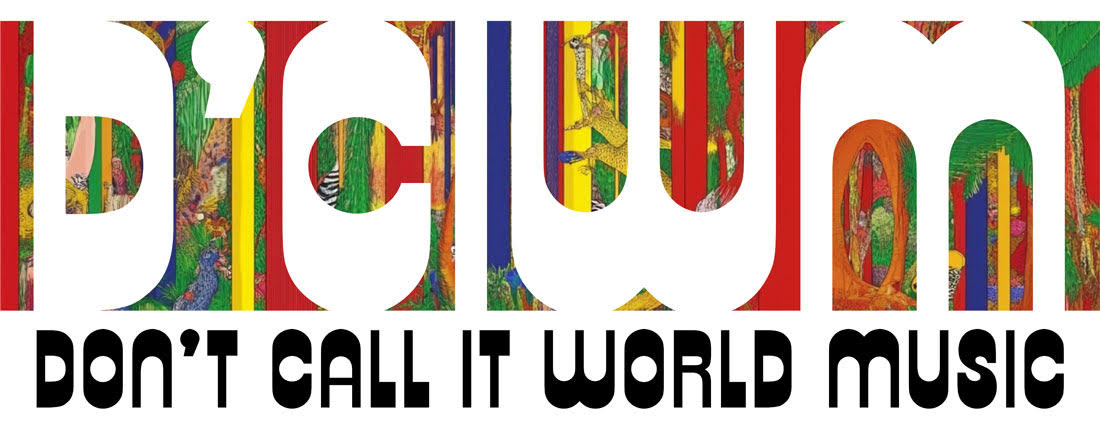Thanks to our 27 new subscribers since our launch 2 weeks ago ! :)
Don’t Call It World Music is a free, independent and curated roundup of music news. Each weekly edition of our newsletter features a handpicked selection of articles related to every kind of music, offering insights into genres from every corner of the globe.
Our mission is to provide visibility to a wide array of issues, musical traditions, artists and genres that are underrepresented or overlooked in mainstream media, generate curiosity and drive traffic to original sources, particularly alternative and independent platforms.
SBS News discusses the viral Russian song "Sigma Boy" and its political implications. It examines how this song, performed by young Russian schoolgirls, gained popularity on TikTok. Some perceive it as a tool of Russian soft power or a form of infiltration into public discourse, particularly due to its masculinist and pro-Russian undertones.
Sigma Boy?
Sigma male is a slang term used in masculinist subcultures for a popular, successful, but highly independent and self-reliant man.
“Sigma Boy transmits a patriarchal and pro-Russian vision of the world to European teenagers. It's an example of Russian infiltration into public discourse.”
MyJoyOnline argues that highlife music originated in Ghana, refuting claims made by some Nigerians. The author cites ethnomusicologist Professor John Collins and historical evidence to support the Ghanaian origin of highlife, tracing its evolution from indigenous Ghanaian sounds and its introduction to Nigeria around 1937.
Louder details the life and career of Arthur Brown, focusing on his hit song "Fire," his theatrical performances, and the challenges he faced.
"Anybody down there on acid – and there must have been a few – seeing this figure flying down with flames coming out of his head must have thought God was coming"
MusicRadar chronicles the 60-year history of Moog, from its revolutionary voltage-controlled modular synthesizers to its acquisition by inMusic. It highlights key figures like Bob Moog and Herbert Deutsch, whose collaboration shaped Moog's approach to instrument design, and landmark products like the Minimoog Model D and the Moog Labyrinth.
Herb Sundays discusses the paradoxical nature of trance music and its historical perception, noting its journey from the late '80s to its Y2K peak and subsequent evolution.
"Unlike holy House, serious Techno, or brainy IDM, an interest in Trance was and is seen as symbolic of a moral failure"
World Music Central details the history, construction, and cultural significance of castañuelas. The article explains the instrument's ancient origins and its evolution into a national symbol of Spain.
Journal of Music and Folklore Studies explores the mazurka genre within Frédéric Chopin's composition. The article emphasizes the fusion of folkloric tradition and innovative composition in Chopin's mazurkas
Mazurka?
A mazurka is a lively Polish folk dance, typically performed by a circle of couples, characterized by stamping feet and clicking heels to the music of a village band. The music, in 3/4 or 3/8 time, features a forceful accent on the second beat, creating a vibrant and dance-like feel.
Treble analyzes Merzbow's "Pulse Demon" as a defining release in harsh noise music. The article highlights the album's overwhelming distortion, the paradox of hidden structures within the noise, and its impact on extreme music.
Harsh Noise?
Harsh noise is a subgenre of noise music characterized by extreme volume, distortion, and chaotic soundscapes, often utilizing unconventional techniques such as distorted synthesizers and feedback.
Esquire examines the life and legacy of Bob Dylan, focusing on his transformations and enigmatic person and delves into Dylan's early life, musical influences, and evolution as an artist.
The New Times discusses the traditional Rwandan hairstyle Amasunzu and its connection to black resistance and music.
Amasunzu?
Amasunzu is traditional Rwandan hairstyle worn by men and unmarried women. It is characterized by intricate crescent-shaped patterns sculpted on the head, symbolizing various aspects of social status, including power, nobility, and marriageability.
• LRB discusses a robotic exoskeleton for the hand developed to aid piano practice. The article mentions Robert Schumann's hand injury and introduces Shinichi Furuya's work on the mechanics of piano-playing and robotics. It details studies testing the exoskeleton's ability to improve pianists' speed and the surprising transfer effect to the untrained hand.
“Knowing what it feels like to play like Art Tatum helps you to play faster".
Splice explores the emerging genre of botanica music, also known as 'petalcore'.
Botanica? Petalcore?
Botanica is a combination of nostalgic acoustic instruments with spectral processing and glitch elements, similar to ambient music.
"It’s like if fairies made hyperpop"
Literary Hub discusses the evolution of the synthesizer from a fringe instrument to a mainstream tool in American music. It recounts early skepticism, key figures like Wendy Carlos, and Stevie Wonder's innovative use of the synthesizer.
PopMatters reviews Richard Dawson's album "End of the Middle," noting its shift towards smaller-scale domestic themes.
PRINT Magazine profiles Marko Vuleta Djukanov, also known as Floating Bstrd, whose posters define Belgrade's music scene. It highlights his retro-futurist style, influences, and his involvement with the Karmakoma nightclub
Pitchfork examines the Michigan rap scene through the lens of three different perspectives: Rio da Yung OG's homecoming show, J.U.S's work ethic, and Shaudy Kash's aspirations.
The SWLing Post presents a personal account by Don Moore of his visits to Guatemala City, focusing on the city's diverse radio scene and his interactions with the Guatemala DX Club.
Far Out Magazine features the Ghanaian highlife band Santrofi, exploring their globally influenced sound and their mission to revive and extend the highlife heritage. Bandleader Kojo Ofori recommends essential highlife records and artists that have inspired them.
The Institut français d’archéologie orientale explores the work of Guillaume-André Villoteau and John Gardner Wilkinson, two pioneers in the study of Pharaonic music in the early 19th century. It discusses their perspectives on Pharaonic music, caught between an idealized "golden age" and perceived degeneration.
If you read this on mobile, you’ll have to click on the above table :)













dig this search feature!